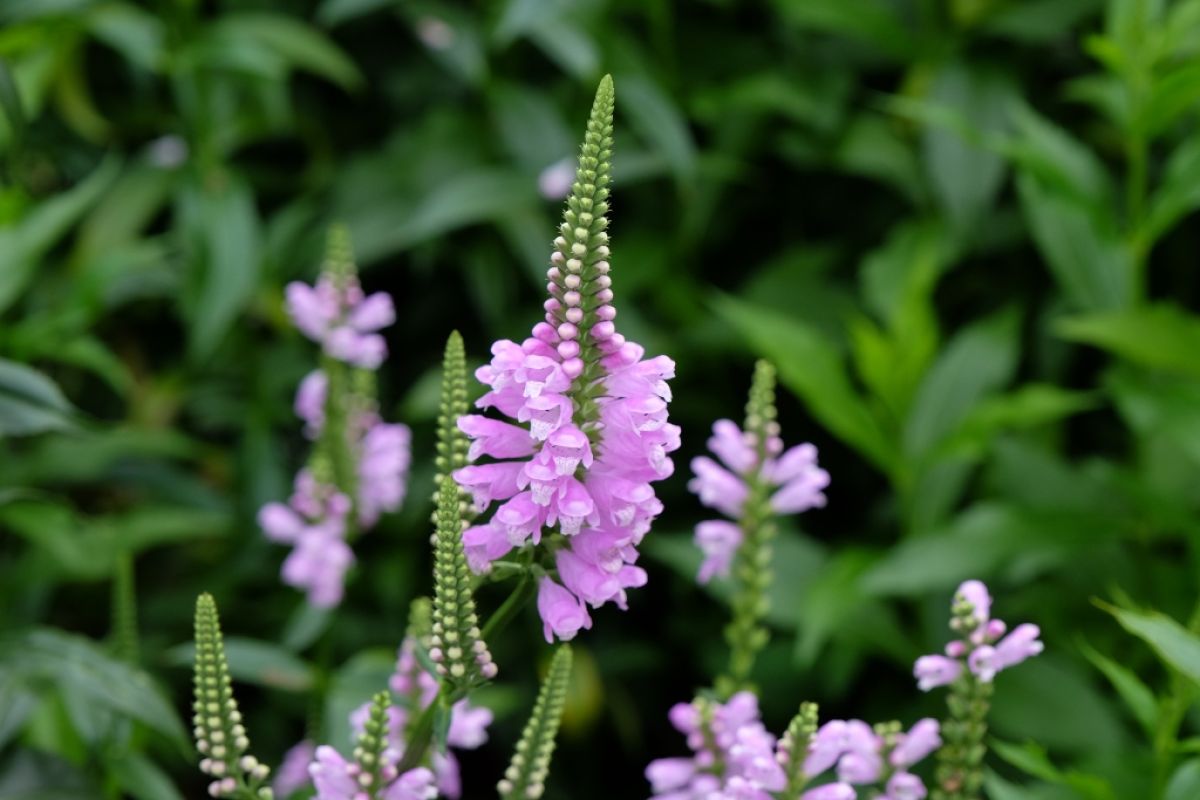Our native physostegia has a number of different names, but whatever you call it, it is a useful plant to have in your garden as long as you plant it in a dry spot. If it gets too much moisture, it becomes rampant and spreads everywhere. In the wild, it is found in swampy areas and wet fields from the Eastern Seaboard as far West as Kansas and Oklahoma.
The flower heads look like tiny snapdragons in form and grow on stiff stems 2-5 feet high. The lilac pink flowers of Physostegia virginiana appear in the fall, and the leaves are dark green and toothed. There is also a white form that blooms a little earlier and is not such a vigorous spreader.
Our other native variety, Physostegia formosa, has longer and thinner leaves and blooms in September and October.
The Latin name “Physostegia” refers to the calyx, which covers their seed pods. “Physa” means bladder and “stege” means a covering. Common names are false dragonhead and obedience part because the stems can be bent up and down and sideways without breaking.
This is Moya Andrews, and today we focused on our native physostegia.










